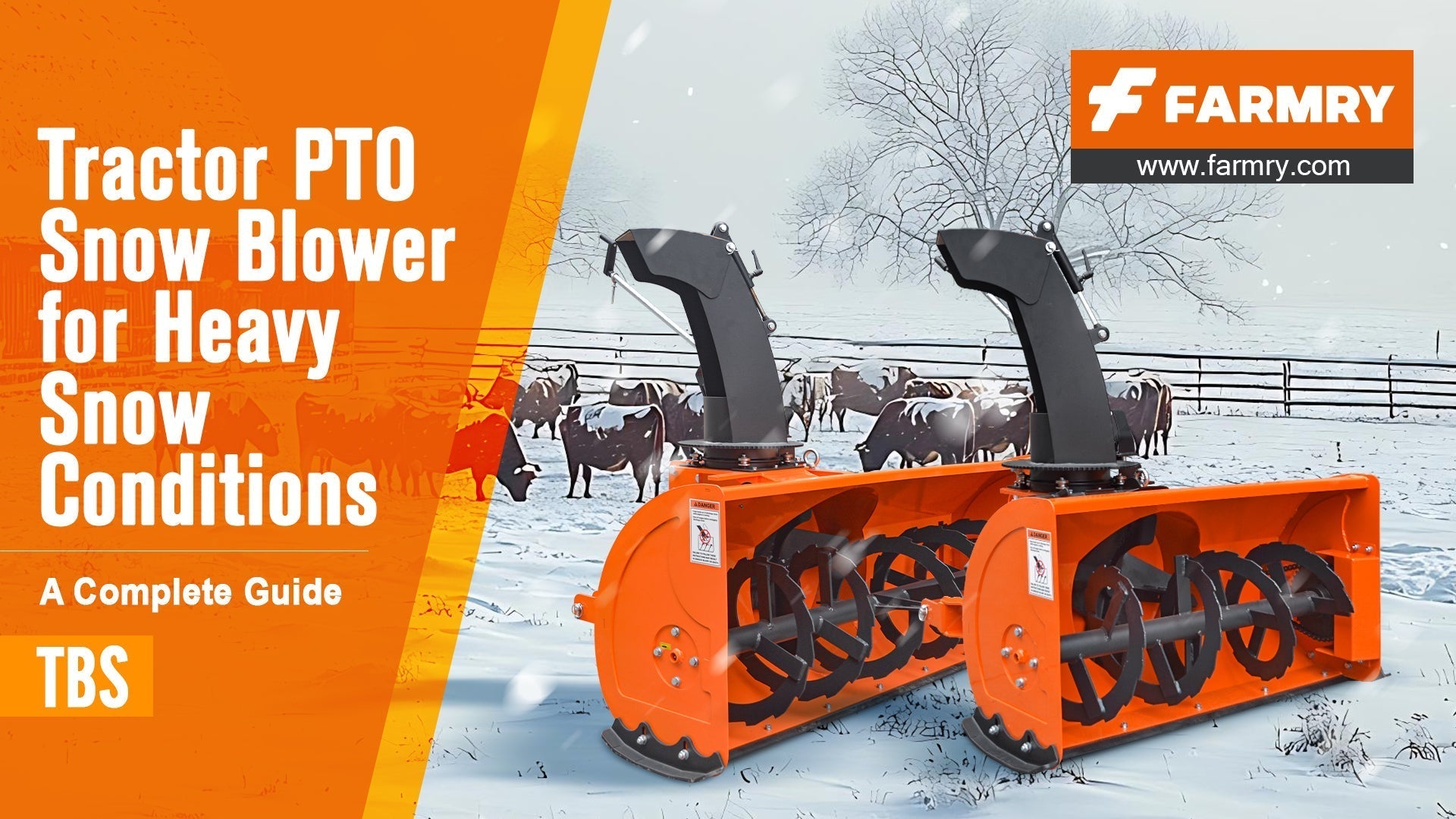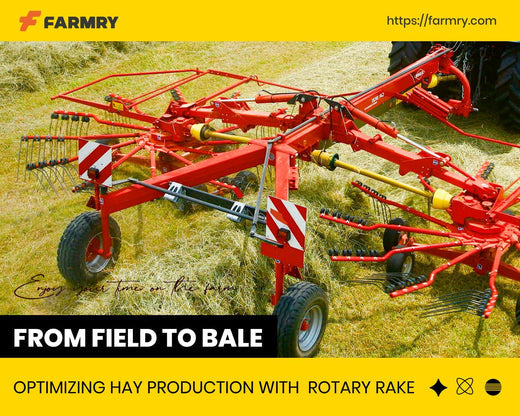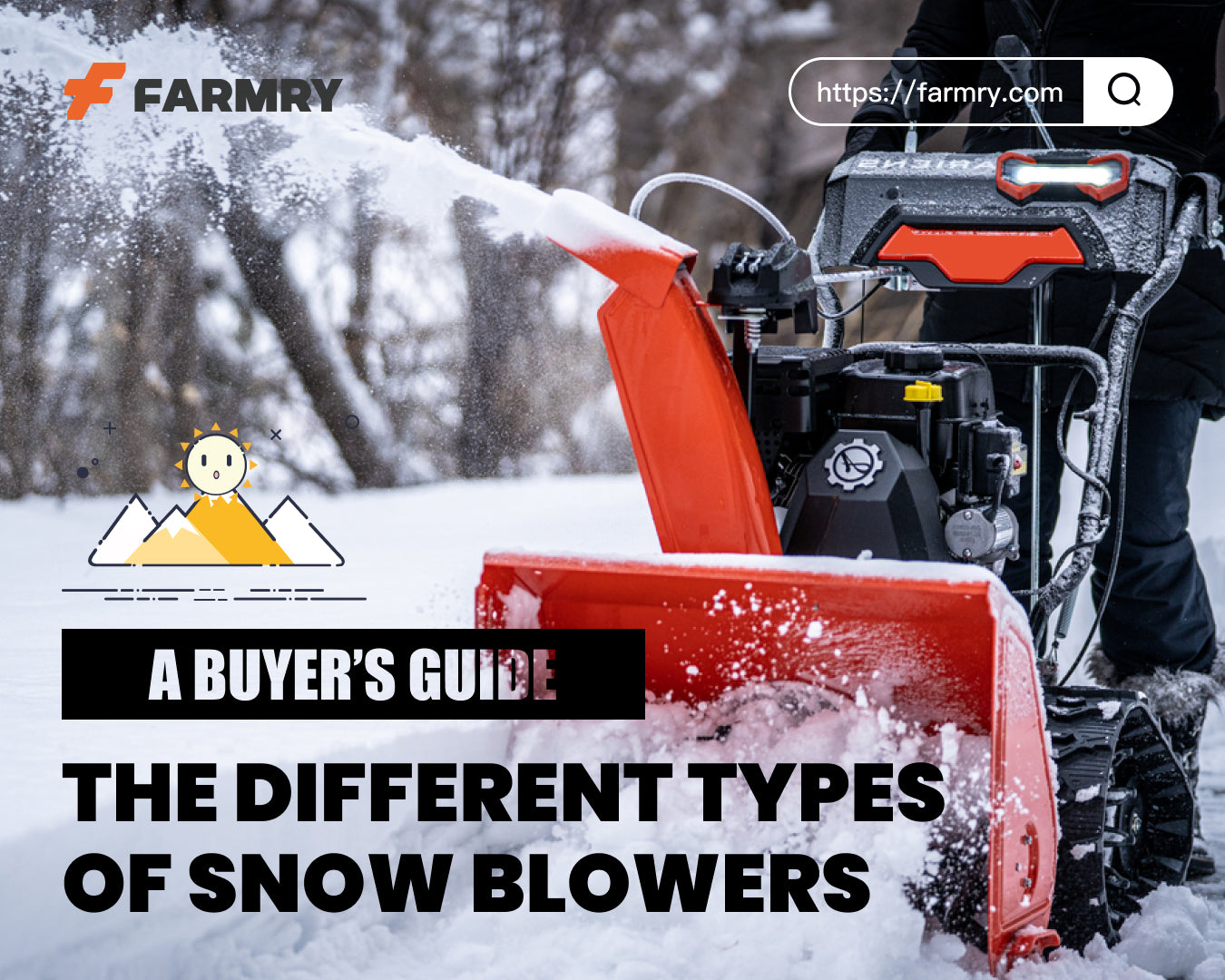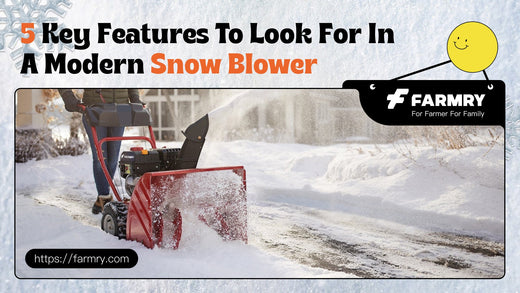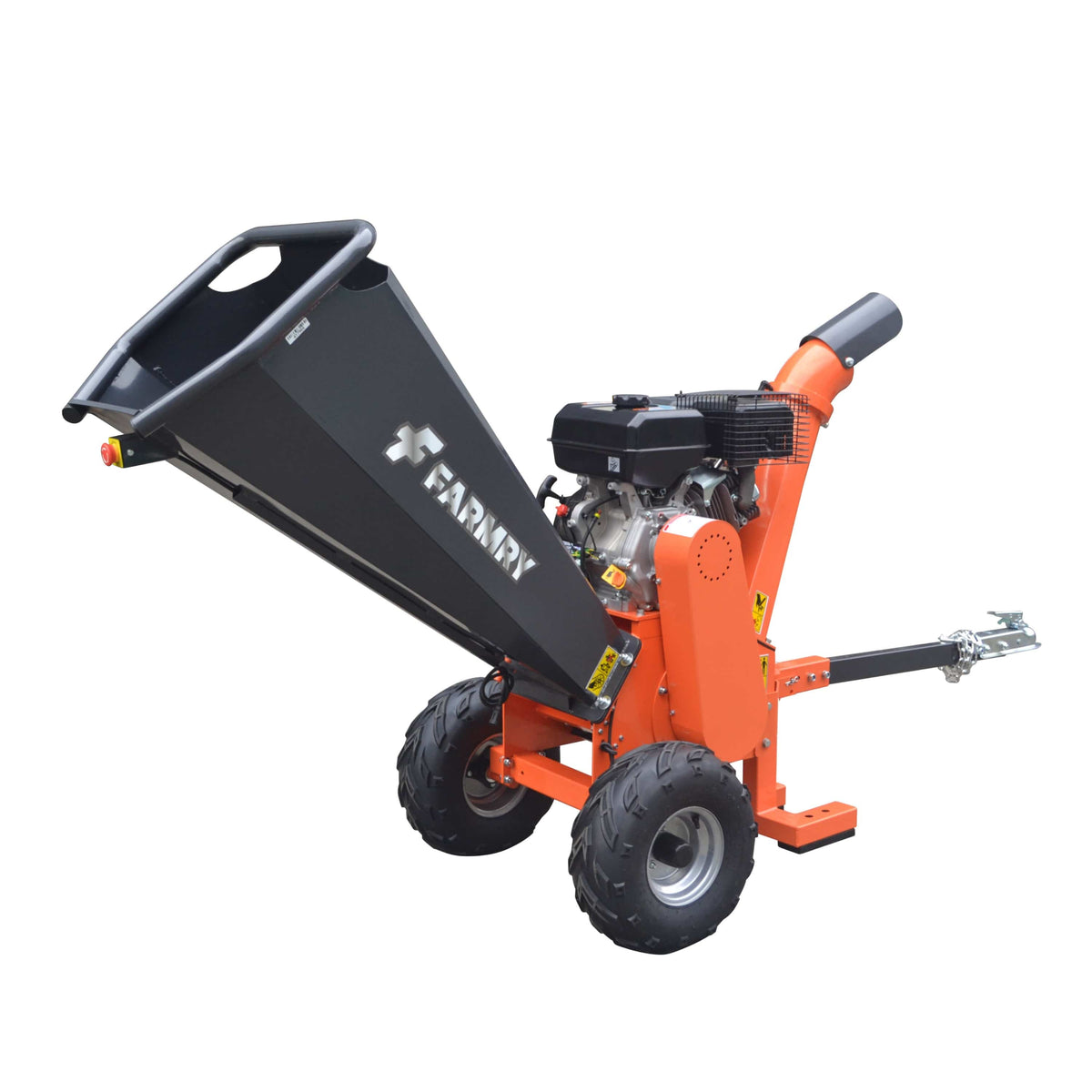How to Maintain a 3 Point Snow Blower for Tractor: The Complete Guide
 How to Maintain a 3 Point Snow Blower for Tractor: The Complete Guide
How to Maintain a 3 Point Snow Blower for Tractor: The Complete Guide
Winter snowstorms can turn peaceful properties, parking lots, and long driveways into serious challenges. For many landowners, farmers, contractors, and facilities managers, a 3 point snow blower for tractor is the most reliable tool for clearing heavy drifts and wet, packed snow.
But here’s the thing: no matter how well a snowblower is built, it requires regular maintenance to keep performing at its best. Skipping even one critical check—like tightening the driveline or adjusting skid shoes—can result in costly downtime, reduced performance, or even major equipment damage.
In this guide, we’ll walk you step by step through how to maintain a 3 point snow blower for tractor, highlight the key parts you should pay attention to, and provide a practical maintenance action plan for different user needs.
Why Maintenance Matters for Your Tractor Snowblower
A 3 point snow blower is a heavy-duty unit designed to handle big jobs—whether you’re clearing parking lots, long farm lanes, or residential driveways. Unlike a simple push snow blower, these PTO-driven units attach to tractors and face tough working conditions:
-
Variable snow types – from fluffy powder to heavy slush.
-
Uneven surfaces – gravel, concrete, asphalt, or mixed terrain.
-
Extended run times – sometimes hours of continuous operation.
Without proper maintenance, you risk:
-
Premature wear on bearings and augers.
-
Gearbox or driveline failure.
-
Uneven cut edge, leaving snow behind.
-
Damage to gravel, pavement, or the blower itself.
In short: good maintenance not only extends the life of your machine but also gives you clean, efficient snow removal all season long.
Key Components to Inspect Regularly
Every snowblower unit has standard parts that require inspection and upkeep. Here’s the checklist:
1. Driveline (PTO Shaft)
-
Ensure the standard driveline is properly greased.
-
Check for damage or bent sections.
-
Confirm safety shields are in place.
-
Verify length is correct for your tractor’s 3 point hitch position.
2. Auger & Impeller
-
Inspect for cracks, bends, or missing welds.
-
Remove any packed snow or ice.
-
Confirm the cut edge is sharp and evenly set.
3. Adjustable Skid Shoes
-
These protect your surface (especially gravel driveways).
-
Regularly adjust skid shoes for the right clearance.
-
Replace when worn down to prevent damage to both surface and blower.
4. Chute Rotation & Deflector
-
Test the chute rotation system (manual crank, hydraulic, or electric).
-
Ensure smooth movement without binding.
-
Keep chute interior clean and coated to reduce sticking.
5. Shear Bolts
-
Always carry extra shear bolts (the “fuses” of a snowblower).
-
Check torque specs in your manual.
-
Replace immediately when broken.
6. Gearbox & Bearings
-
Top off gearbox oil as specified.
-
Check seals for leaks.
-
Grease all zerks every 8–10 hours of operation.
Seasonal Maintenance Action Plan
Let’s break it down into practical steps, so whether you’re a homeowner or a snow contractor clearing parking lots, you know exactly what to do.
1. Pre-Season (Before First Snowfall)
-
Review the manual for torque specs and lubrication schedules.
-
Grease all fittings (driveline, auger bearings, chute rotation gears).
-
Inspect and set skid shoes for surface type.
-
Check gearbox oil level.
-
Test chute rotation from seat—upgrade if optional controls are needed.
-
Verify shear bolts are intact (keep a set of spares ready).
-
Test fit with tractor’s quick hitch for proper position and alignment.
2. Mid-Season (During Snow Removal)
-
After every 10 hours, grease moving parts.
-
Clear ice buildup from auger and chute.
-
Check the cut edge and skid shoes for even wear.
-
Monitor driveline for vibration or noise.
-
Review performance: Is the unit giving consistent throw distance?
3. Post-Season (After Winter Ends)
-
Wash the unit thoroughly—salt and sand cause corrosion.
-
Touch up paint to prevent rust.
-
Drain/replace gearbox oil if contaminated.
-
Store in a dry place, on wood blocks (not directly on ground).
-
Update your maintenance log for next year’s reference.
Tips Based on User Personas
Different owners face different challenges when it comes to snow removal. Based on our earlier findings, here are some tailored insights:
1. Acreage Homeowner
-
Focus: Ease of use, minimal downtime.
-
Key tip: Set skid shoes higher to avoid throwing gravel into windows or cars.
2. Mountain Cabin Owner
-
Focus: Heavy drifts and ice.
-
Key tip: Always keep spare shear bolts—icy drifts break them fast.
3. Small Farmer
-
Focus: Clearing around barns and gates.
-
Key tip: Consider optional inverted or pull-type blowers for better visibility near doors.
4. Contractor
-
Focus: Efficiency in multiple driveways.
-
Key tip: Upgrade to hydraulic chute rotation for faster action between jobs.
5. HOA Manager
-
Focus: Consistency, safety.
-
Key tip: Standardize blower width and skid shoe settings across all units.
Common Mistakes That Lead to Damage
Even experienced tractor owners sometimes overlook the little things:
-
Running with worn skid shoes – digs into gravel, bending augers.
-
Skipping driveline greasing – causes vibration, leading to failure.
-
Overtightening shear bolts – eliminates safety protection.
-
Ignoring chute rotation stiffness – until it jams mid-storm.
-
Failing to read the manual – every brand has unique setup notes.
Optional Upgrades Worth Considering
Modern snowblowers offer plenty of options that can make life easier:
-
Hydraulic chute rotation & deflector – saves time over manual cranks.
-
Poly or replaceable cutting edges – extend life and reduce surface damage.
-
Heated cabs or cameras – reduce operator fatigue when constantly reversing.
-
Quick hitch compatibility – makes connecting the blower much faster.
Final Review: Keep Your 3 Point Snow Blower Built to Last
When you invest in a 3 point snow blower for tractor, you’re not just buying a piece of equipment—you’re buying a critical part of your winter survival kit. The difference between frustration and flawless performance often comes down to maintenance.
By regularly checking your driveline, keeping skid shoes properly set, maintaining chute rotation, and following the action plan we’ve outlined, you’ll not only extend the life of your snowblower unit but also ensure safer, faster, and cleaner snow removal.
Whether you’re clearing parking lots, long driveways, or farm roads, proper upkeep means you’ll always be ready for the next storm.


